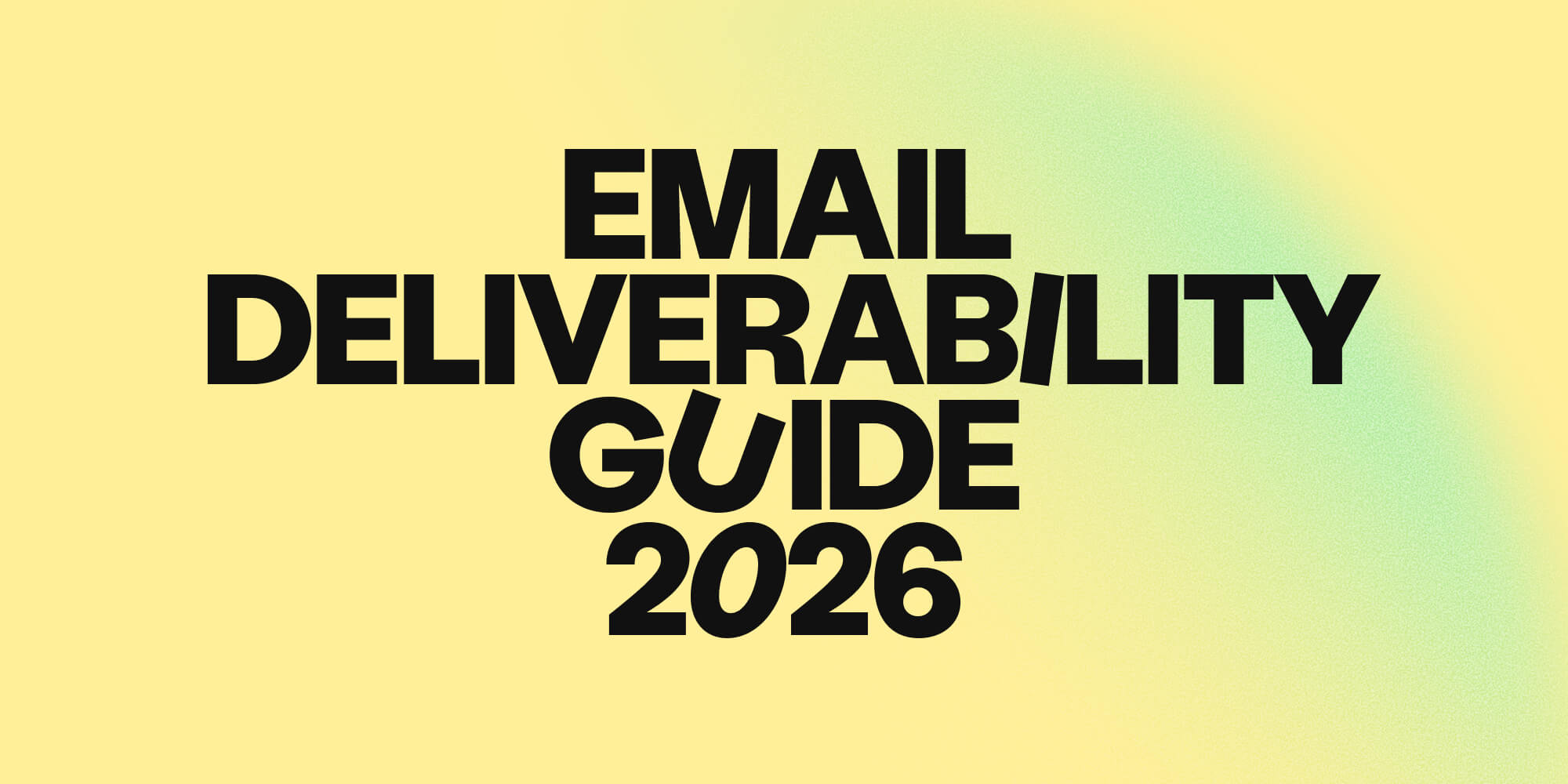The B2B marketing funnel: what is it and how it can help your business
•
April 3, 2024
.jpg)
When it comes to marketing funnels, there's no one-size-fits-all approach.
That’s because your marketing funnel isn’t actually about you; it’s about the buying habits of your specific audience.
Your funnel should be set up to make the buying journey as smooth and frictionless as possible, maximizing conversion rates so that ultimately, your sales team can close deals more efficiently. Because whilst an effective funnel makes the buying experience more satisfying for your prospects, it also helps you optimize your return on investment (ROI) and customer acquisition costs (CAC).
In this blog, we’ll explore what defines a marketing funnel (as opposed to a sales funnel), and how it is typically structured. We’ll also address how you can optimize your marketing funnel to create high-quality engagement with leads and bring more qualified prospects into your pipeline.
What is a B2B marketing funnel?
The marketing funnel is a framework used by businesses to outline the journey prospects take from initial awareness of their brand to becoming paying customers.
It consists of several stages, each representing a different level of engagement and readiness to purchase. At each stage we see a drop-off in leads converting to the next stage in the buying process, hence the “funnel” shape.
Understanding your funnel allows you to tailor your marketing efforts to meet the needs of prospects at each stage so they stand the best chance of converting.
What’s the difference between a sales funnel and a marketing funnel?
There is some overlap between sales and marketing funnels, but generally they’re considered separate things.
A marketing funnel encompasses all your brand’s customer interactions from the moment they first hear about you right through to them (hopefully) becoming a converted, loyal customer or brand champion.
A sales funnel, on the other hand, describes your prospect’s journey toward making a purchase.
Marketing funnel = customer journey with your brand
Sales funnel = customer journey for a specific purchase
Seen in this light, marketing funnels take care of nurturing prospects or customers in the long term to become brand champions.
Sales funnels, meanwhile, are more focused on closing deals - whether it’s signing new customers, renewals, cross-sells, or up-sells.
Stages of the B2B marketing funnel
At its most basic, the marketing funnel typically consists of three main stages: top of the funnel (TOFU), middle of the funnel (MOFU), and bottom of the funnel (BOFU). Leads flow into the wide TOFU and filter downwards towards the BOFU, so you’ll start with large numbers of prospective leads and end up with fewer, more qualified ones.
However, we can break the funnel down further using a more detailed model. From top to bottom, you could have seven funnel stages: awareness, interest, consideration, evaluation, purchase, loyalty, and advocacy.
Let's explore each stage in detail:
1. Awareness Stage (TOFU)
At the top of the funnel, prospects are in the awareness stage, where they become familiar with your brand and offerings. They may not yet have a clear understanding of their needs or the solutions available, so your goal at this stage is to attract and educate prospects, positioning your brand as a valuable resource and thought leader in your market space.
2. Interest Stage (MOFU)
In this stage, prospects have shown interest in your offerings and are actively seeking more information. They’re starting to research solutions and evaluate different providers to address their needs. Your focus at this stage is on nurturing leads and providing them with valuable information to guide their decision-making process.
3. Consideration Stage (MOFU)
Prospects in the consideration stage have narrowed down their options and are weighing up your solution against your competitors. They’re looking for more in-depth information, case studies, and testimonials to inform their final decision, so your goal here is to provide persuasive content and address any concerns or objections they may have.
4. Evaluation Stage (BOFU)
By now, prospects are ready to make a decision and are making more nuanced feature, pricing, and value comparisons against your competitors. They may request extra product demonstrations, free trials, or specific use-case consultations to evaluate your solutions in more detail. At this stage, you need to be patient and attentive (not pushy!) to help prospects make a confident decision.
5. Purchase Stage (BOFU)
At the bottom of the funnel, prospects have made the decision to purchase and are ready to convert into customers. You still need to make the conversion process as seamless and frictionless as possible, providing clear pricing information, intuitive resources, and any additional incentives to encourage prospects to take action.
6. Loyalty Stage (Beyond the traditional funnel)
At this stage of the B2B marketing funnel, customers have already made multiple purchases and are highly satisfied with their experience with your brand. The primary objective now is to foster long-term loyalty and deepen the relationship between your brand and its customers. Your focus should be on providing ongoing support, personalized communication, and exclusive benefits to ensure customer retention and maximize their lifetime value.
7. Advocacy Stage (Beyond the traditional funnel)
In the advocacy stage of the B2B marketing funnel, loyal customers evolve into enthusiastic advocates who actively promote your brand to their networks and start feeding your TOFU again!
Your goal at this stage is to empower these advocates, encourage user-generated content, and highlight customer success stories to amplify your brand's reach and influence. By fostering a community of passionate advocates, you can leverage the power of word-of-mouth marketing to attract new prospects and drive sustained business growth.
B2B top-of-funnel marketing
At this stage, your prospect is just entering the funnel and has no knowledge of you or what you offer. First of all, you need to make them aware of a pain or want.
This can happen organically, but active marketing campaigns - like PPC or SMM - can help you reach your target audience faster. Content marketing also helps you build a strong SEO presence whilst positioning your brand as an industry leader.
Examples of top-of-funnel marketing include:
- Creating informative blog posts, articles, and whitepapers that address common pain points and industry trends.
- Engaging in social media marketing to increase brand visibility and share valuable content with your target audience.
- Utilizing search engine optimization (SEO) techniques to ensure your content ranks high in relevant search results.
- Offering free resources such as ebooks, guides, or webinars in exchange for contact information to start building relationships with prospects.
B2B mid-funnel marketing
At the middle of the funnel, you’ll want to familiarize prospects with your product in more detail so they understand the features available and the value you offer. You’ll also start to show why they should choose you over competitors, using social and industry proof as evidence in your favor.
Some effective mid-funnel marketing tactics include:
- Sending targeted email campaigns that provide relevant content based on prospects' interests and actions.
- Sharing case studies, product demos, and testimonials to showcase the effectiveness of your solutions.
- Offering interactive tools or assessments to help prospects assess their needs and identify the best-fit solutions.
- Hosting educational webinars or events to engage prospects and address their specific challenges.
B2B bottom-of-funnel marketing
This stage requires all your flexibility (and patience) as a salesperson and marketer. Ideally, your prospect will be equipped with all the resources they need to make a decision on whether or not to buy, but you need to be ready to answer any questions or objections that arise. Remember to coordinate follow-ups with your customer so you can (hopefully) keep the momentum going.
Strategies for bottom-of-the-funnel marketing include:
- Offering further product demonstrations, free trials, or consultations to allow prospects to experience your solutions firsthand.
- Providing detailed pricing information, case studies, and testimonials to address any remaining concerns or objections.
- Implementing retargeting ads to re-engage prospects who have shown interest but haven't yet converted.
- Offering special promotions or discounts to incentivize prospects to take action and make a purchase.
B2B marketing efforts for loyalty and advocacy
Once your customers have reached the loyalty and advocacy stages of the B2B marketing funnel, your focus shifts from acquisition to nurturing and leveraging their existing loyalty to drive advocacy and further business growth.
Here are some strategies for effectively engaging customers in these stages:
- Fostering Ongoing Engagement with personalized communication, and valuable resources tailored to their needs.
- Offer exclusive Benefits, Rewards, or loyalty programs to incentivize repeat purchases and reinforce the value of being a loyal customer.
- Encouraging User-Generated Content and Empower your satisfied customers to become brand advocates by encouraging them to share their success stories, testimonials, and reviews.
- Foster a sense of community among your customers by facilitating interactions, discussions, and networking opportunities..
- Encourage happy customers to refer their colleagues, partners, or industry peers to your brand and provide incentives or rewards for successful referrals.
Measuring the success of your B2B marketing funnel
Building a successful marketing funnel isn’t just about getting good numbers; it means really understanding and addressing your customers' behaviors and needs. The more data you can draw upon to assess your funnel, the easier it will be to identify weak points in your funnel flow and adjust your resources for improvement.
Key marketing funnel metrics
Cost per Acquisition (CPA)
This is the cost of acquiring a single customer through marketing efforts.
By dividing the total campaign expenditure by the number of conversions, you can measure the efficiency of your various marketing campaigns and channels. If the cost surpasses the benefits, it might be time to reconsider the campaign strategy or explore alternative approaches.
Customer Lifetime Value (LTV)
LTV gauges the long-term value contributed by a customer to your business. This metric is particularly relevant for subscription-based models like SaaS, but it’s also useful if you’re targeting up-sells or cross-sells. Predicting the likelihood of repeat purchases offers valuable insights into customer retention strategies, referral opportunities, and the nurturing of new brand champions.
Conversion Rates
These metrics show the rate of conversion between the different stages of your marketing funnel.
Remember, the marketing funnel isn’t just not just about closing deals. Every micro-conversion or goal conversion through your funnel counts on the prospect’s journey with your brand.
Here are some examples of conversion rates:
- Top-of-Funnel (TOFU) conversion: The transition of visitors into marketing qualified leads (MQLs).
- Middle-of-Funnel (MOFU) conversion: The conversion of MQLs into sign-ups or subscribers.
- Bottom-of-Funnel (BOFU) conversion: The progression of sign-ups or subscribers into customers.
Conversion rate per channel
Different marketing channels allow you to reach different audiences with different messaging throughout your funnel. Channels such as organic search, paid ads, referrals, and email marketing contribute to conversions in unique ways, so defining conversion criteria for each allows you to compare their respective impact and adjust your resources as needed.
Optimizing your B2B marketing funnel
There’s no universal solution when it comes to marketing or sales so it’s up to you to find a funnel model that fits your business. Building your funnel is an ongoing process that requires you to keep monitoring prospect or customer engagement and adjust your campaigns to best meet their needs.
Finally, in the context of marketing, the “funnel” structure is a little misleading. Your customer’s journey with your brand goes on beyond their purchase, and if you don’t have a strategy for fostering customer loyalty and advocacy, you could be missing out on valuable referral opportunities!
If you’re looking to fill your marketing funnel with your ideal customers, Amplemarket’s world-leading B2B data is the fuel you need. Sign up for a demo to see it in action!
FAQs
How can I measure the success of my B2B marketing strategy?
Measuring the success of your B2B marketing strategy involves assessing various metrics to gauge its effectiveness in achieving your business objectives. Here are some key steps to measure the success of your B2B marketing strategy:
- Define Clear Objectives: Start by defining specific and measurable goals for your marketing efforts, such as increasing lead generation, improving brand awareness, or driving sales.
- Track Key Performance Indicators (KPIs): Identify relevant KPIs that align with your objectives and track them regularly.
- Analyze Data: Use analytics tools to gather and analyze data on various marketing channels and campaigns.
- Conduct Surveys and Feedback: Gather feedback from customers, prospects, and stakeholders through surveys, interviews, and feedback forms.
- Monitor ROI: Calculate the return on investment (ROI) for your marketing initiatives by comparing the cost of your campaigns to the revenue generated or other predefined business outcomes.
- Adapt and Iterate: Use the insights gained from your measurements to refine and optimize your B2B marketing strategy over time.
What is the difference between a B2B marketing funnel and a B2B sales funnel?
The B2B marketing funnel encompasses the stages through which potential buyers progress as they interact with your marketing efforts. It typically consists of stages such as awareness, interest, consideration, evaluation, and purchase, where prospects move from being aware of your brand to making a purchase decision.
Marketing activities at each stage aim to attract, engage, and nurture leads, ultimately guiding them towards becoming qualified prospects for the sales team.
The B2B sales funnel focuses specifically on the stages involved in converting qualified leads into paying customers through direct sales interactions. It gnerally includes stages such as prospecting, lead qualification, needs analysis, proposal, negotiation, and closing.
Sales activities at each stage aim to build relationships, address customer needs, overcome objections, and ultimately secure a sale.
While the B2B marketing funnel and B2B sales funnel serve distinct purposes, they work together to drive revenue and growth for B2B organizations.
Subscribe to Amplemarket Blog
Sales tips, email resources, marketing content, and more.










